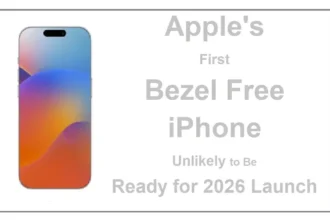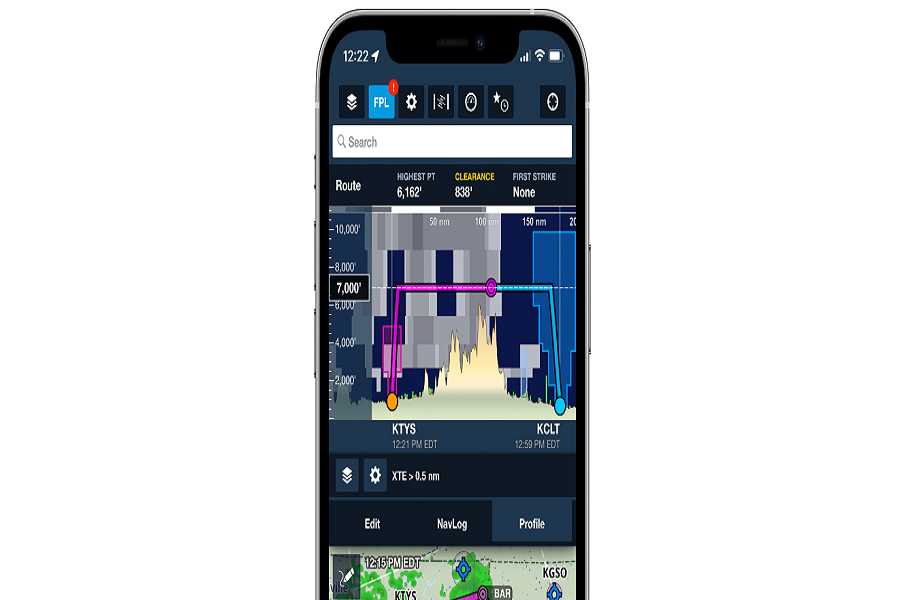For pilots, having the latest aviation tools at your fingertips is critical for smooth flying. ForeFlight, the popular iOS app for pilots, continues to innovate with its iOS 17 update that introduces several new capabilities to enhance flight planning, navigation, weather insights and more.
This update brings highly anticipated features like a beta radar layer that provides accurate real-time weather data, an annotations eraser to streamline flight planning, improved logbook filtering for easy access to flight history, a profile line pointer for better inflight position awareness, a visual guide for missed approach climbs, 3D representation of obstacles/hazards and advanced airspace features.
With ForeFlight’s relentless commitment to improving the flying experience, pilots can take to the skies with greater confidence and safety. The iOS 17 update equips pilots with cutting-edge tools to navigate challenging situations, plan efficient routes, avoid obstacles, and leverage critical weather data anytime. ForeFlight soars to new heights with this release, demonstrating how innovative technology can empower pilots.
ForeFlight’s New Features
Beta Radar Layer: A Glimpse into the Future
The beta radar layer is a game-changer for pilots, offering lightning-fast and highly accurate weather information. Though currently in beta testing, this feature promises to revolutionize how pilots perceive and prepare for weather conditions. Imagine having real-time, precise weather data at your fingertips, enabling safer and more informed decisions mid-flight.
Map Annotations Eraser: Streamlining Flight Planning
The map annotations eraser tool is a small yet incredibly useful addition, allowing pilots to easily remove annotations and markings from the map. This functionality streamlines the flight planning process, enabling clearer maps for efficient navigation. Pilots can now plan their routes with enhanced clarity, marking a significant improvement in user experience.
Improved Logbook Filters: Organizing Your Journey
ForeFlight has taken a step further in enhancing its logbook filters, making it a breeze to organize and search for specific flights and relevant information. This update offers better organization and search capabilities, ensuring pilots can access crucial data swiftly and efficiently. Keeping track of flight history has never been easier.
Profile Line Pointer: Enhancing Interpretation
Understanding your aircraft’s position on the profile view is crucial for safe and effective flight management. The profile line pointer feature aids in visualizing this position, simplifying the interpretation and analysis of flight data. It’s like having a co-pilot assisting you in understanding your aircraft’s dynamics during the journey.
Minimum Missed Approach Climb: A Visual Guide to Safety
Safety is paramount in aviation, and the minimum missed approach climb feature provides a visual representation of the climb gradient required for a missed approach. This visual aid empowers pilots to plan and execute approach procedures with precision, adding an extra layer of safety and confidence in critical phases of flight.
3D Obstacles and Hazards: Heightened Situational Awareness
The 3D representation of buildings, towers, and windmills with nighttime lighting is a significant step towards enhancing situational awareness. This feature enables pilots to visualize potential obstacles and hazards during flights, promoting safety and confidence, especially during night-time operations.
Advanced Airspace Features: Navigate with Precision
The latest update in ForeFlight introduces advanced airspace features, providing detailed and accurate information about airspace boundaries and restrictions. Pilots can now navigate with precision, knowing exactly where and how to steer to adhere to airspace regulations, ultimately contributing to a safer and more compliant flying experience.
Wrapping Up
ForeFlight’s continuous innovation and commitment to enhancing the pilot experience are evident in the iOS 17 update. These new features not only streamline flight planning and navigation but also prioritize safety and situational awareness. Pilots can now take to the skies with more confidence, backed by the power of advanced technology.






